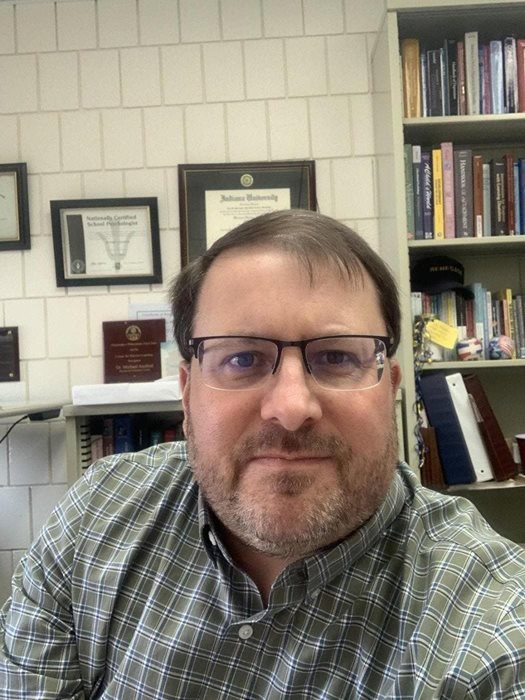Therapeutic Treatment of Child and Adolescent Anxiety

1:00 - 3:00pm CST
Course Description
At any given time up to 20% of adolescents meet diagnostic criteria for a psychological condition and at least 50% of all adult mental health conditions have an onset in childhood or adolescence (Belfer, 2008). The combination of various anxiety disorders (e.g., Generalized Anxiety Disorder, Obsessive-Compulsive Disorder) tends to make up a large portion of the child and adolescent population experiencing mental health problems. Recent research suggests that about 10% of children and adolescents meet criteria for an anxiety disorder (Steinsbekk, Ranum, & Wichstrom, 2022) and anxiety disorders of childhood and adolescence rarely remit over time (Kendall, Hedtke, & Aschendrand, 2006). Complications from even moderate anxiety include psychosocial problems, academic and school-related concerns, and comorbid psychopathological issues including mood disorders. Countless studies have identified a need to improve child and adolescent mental health programming. For example, school professionals have been found to be ill equipped to effectively support adolescent mental health in the classroom (Burke, 2002). In addition, practitioners themselves have identified gaps in their own training. Madge, Foreman, and Baksh (2008) found that primary care mental health providers reported a lack of knowledge of child and adolescent mental health and skills in the treatment of mental health problems. Researchers have emphasized bringing evidence-based assessment, conceptualization, and intervention ideas to practitioners (see Weist, 2005). Experts have stressed a need for effective tertiary intervention services for students with significant mental health needs (Merrell & Gueldner, 2010). Research on the treatment of child and adolescent anxiety has identified Cognitive Behavior Therapy (CBT) as probably efficacious (Silverman, Pina, & Viswesvaran, 2008). Simply stated, CBT for anxiety involves making connections between thoughts, emotions, and behavior, identifying and subsequently altering irrational beliefs or thoughts, and developing and implementing more adaptive behavioral patterns. In addition, CBT emphasizes anxiety management and reduction, self-awareness, and skill development. Despite CBT’s effectiveness with children and adolescents with anxiety, it does have its problems. First, a great deal of training and supervision is required for practitioners to become effect CBT therapists and many practitioners have very limited training experiences in CBT specifically. Second, there are children and adolescents who do not respond to CBT as an intervention for anxiety (typically between 50% and 70% of participants respond positively in well controlled studies) and research is limited with regard to these treatment nonresponders (Silverman et al., 2008). Finally, the degree to which parents are involved in treatment has been inconsistently reported in the literature. Some CBT treatment protocols minimally involve parents while others heavily involve parents in treatment. The purpose of this presentation is to provide practitioners (e.g., psychologists, therapists, healthcare providers) with easy to use, evidence-based intervention strategies for children and adolescents with anxiety disorders that do not require intensive training. Specifically, this presentation focuses on effective strategies that can be implemented in a various settings. Participants will first be provided with a model to conceptualize anxiety that considers developmental aspects of childhood and adolescence and psychopathological perspectives of anxiety. Participants will then be provided with practical and research-supported therapeutic approaches to treating adolescent anxiety that stress the development of emotional self-regulation skills and anxiety management/reduction techniques. The presentation introduces practitioners to conceptual issues including social validity of evidence-based treatments for anxiety, appropriate treatment objectives, and the notion of treating symptoms versus disorders. Participants will also be exposed to several common evidence-based treatments for adolescent anxiety including exposure/response prevention, regulated breathing, progressive muscle relaxation, distraction, and goal setting. Through the use of clinical case studies, several topics will be discussed: (1) strategies on how to include parents in the intervention process (2) targeting specific problems versus general complaints, (3) social acceptability of exposure-based treatments, and (4) techniques for improving emotional self-regulation skills.
Learning Objectives:
- To describe evidence-based conceptualizations of child and adolescent anxiety
- To understand developmental considerations associated with child and adolescent anxiety
- To utilize research-supported approaches for treating child and adolescent anxiety
About Your Trainer

Michael I. Axelrod, Ph.D, LP, NCSP
In my 30-year career, I have been a school counselor, therapist, school psychologist, and clinical psychologist. I have a Master's Degree in counseling psychology from St. Lawrence University (Canton, NY) and a Ph.D. in School Psychology from Indiana University (Bloomington, IN). I completed a predoctoral internship in child/adolescent clinical psychology and two-year post-doctoral fellowship in pediatric psychology at Father Flanagan's Girls and Boys Town (Omaha, NE) and Creighton University School of Medicine. I currently direct an on campus clinic and teach in our graduate school psychology program. I have extensive clinical and research experience working with children, adolescents, families, and schools where anxiety is the primary concern. I've presented on this topic at national conferences (e.g., National Association of School Psychologists, American Psychological Association) and teach a certificate program through UW-Eau Claire's Continuing Education office that includes a module on anxiety.